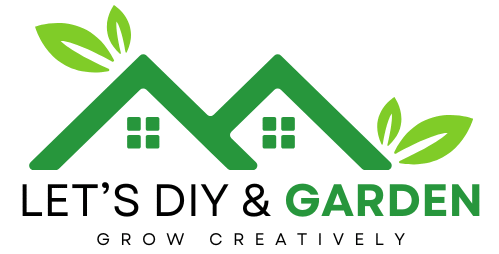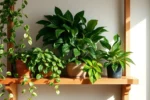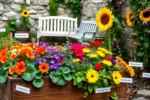Welcome to “Budget-Friendly Indoor Plant Ideas,” your gateway to transforming any space into a lush sanctuary without breaking the bank. Whether you’re just starting your gardening journey or you’ve been nurturing plants for years, this guide is designed to bring a splash of green into your life while keeping costs down. With a selection of hardy, low-maintenance plants, you’ll find options that fit both your lifestyle and budget, offering an accessible way to cultivate your green thumb.
In this guide, you’ll discover the hidden gems of the plant world that promise beauty and tranquility without demanding too much from your wallet or your schedule. These carefully curated plant ideas not only enhance your indoor aesthetics but also improve air quality and personal well-being. As you explore each suggestion, you’ll feel empowered to create a thriving indoor garden, confident that each plant is a step toward a more vibrant and fulfilling home environment. The joy of watching your new plant companions flourish will undoubtedly bring a rewarding sense of accomplishment, proving that successful gardening is truly within everyone’s reach.
Repurpose Containers as Planters
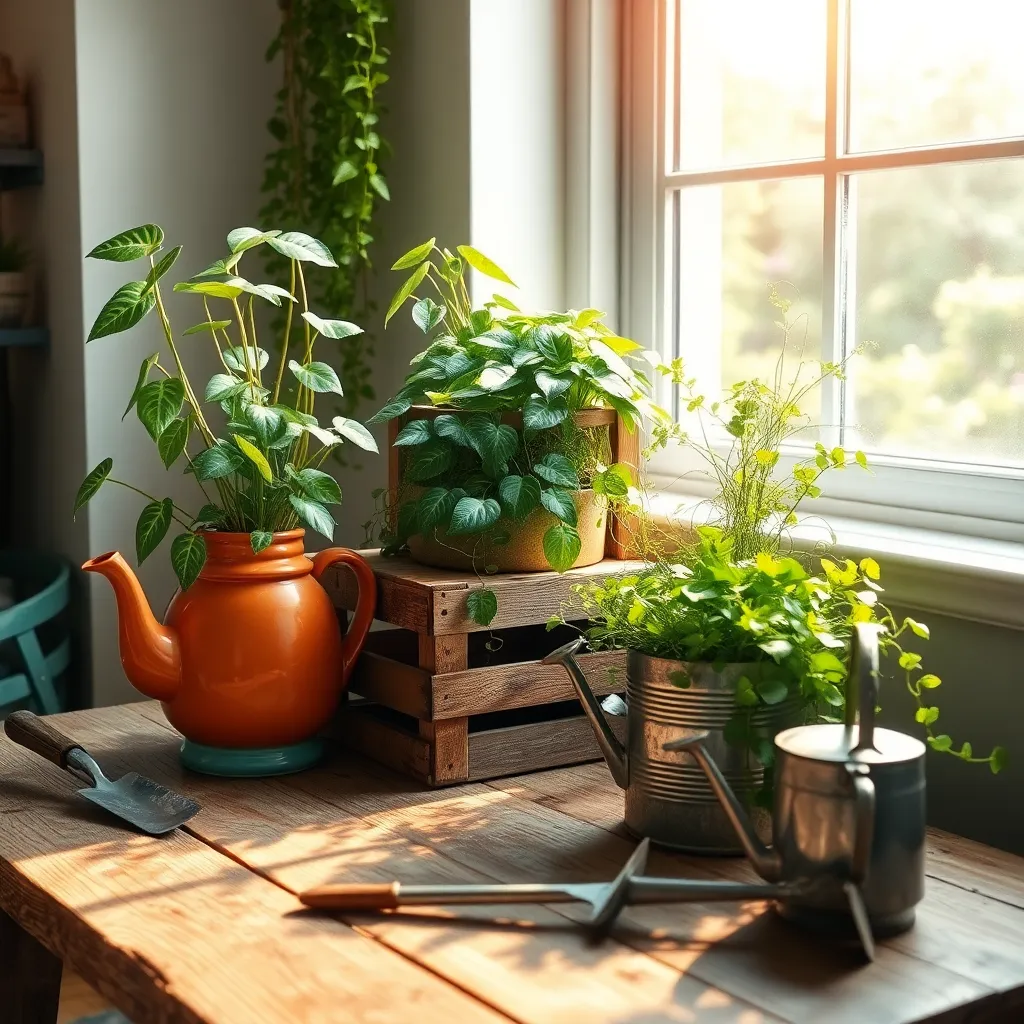
Repurposing containers as planters is a creative and sustainable way to expand your indoor garden without breaking the bank. Look around your home for unused items like teapots, old mugs, or even kitchen colanders, which can all serve as unique planters.
Ensure these containers have proper drainage, as this is crucial for plant health. You can add drainage holes using a drill for ceramic and metal items or simply place a layer of pebbles at the bottom for items that can’t be altered.
Choose a well-draining potting mix suitable for indoor plants, which often includes a mix of peat moss, perlite, and vermiculite. This ensures that your plants, whether they’re succulents or herbs, have the right balance of moisture retention and aeration.
Watering needs will vary based on the type of container and plant chosen. For instance, succulents in a colander will dry out faster, requiring less frequent watering, while herbs in a teapot may need more consistent moisture.
Advanced gardeners can experiment with creating their own potting mixes by adjusting the ratios of peat moss, perlite, and compost for specific plant needs. This not only saves money but also allows for customization to suit a variety of plants, enhancing their growth and health.
Propagate Plants from Cuttings
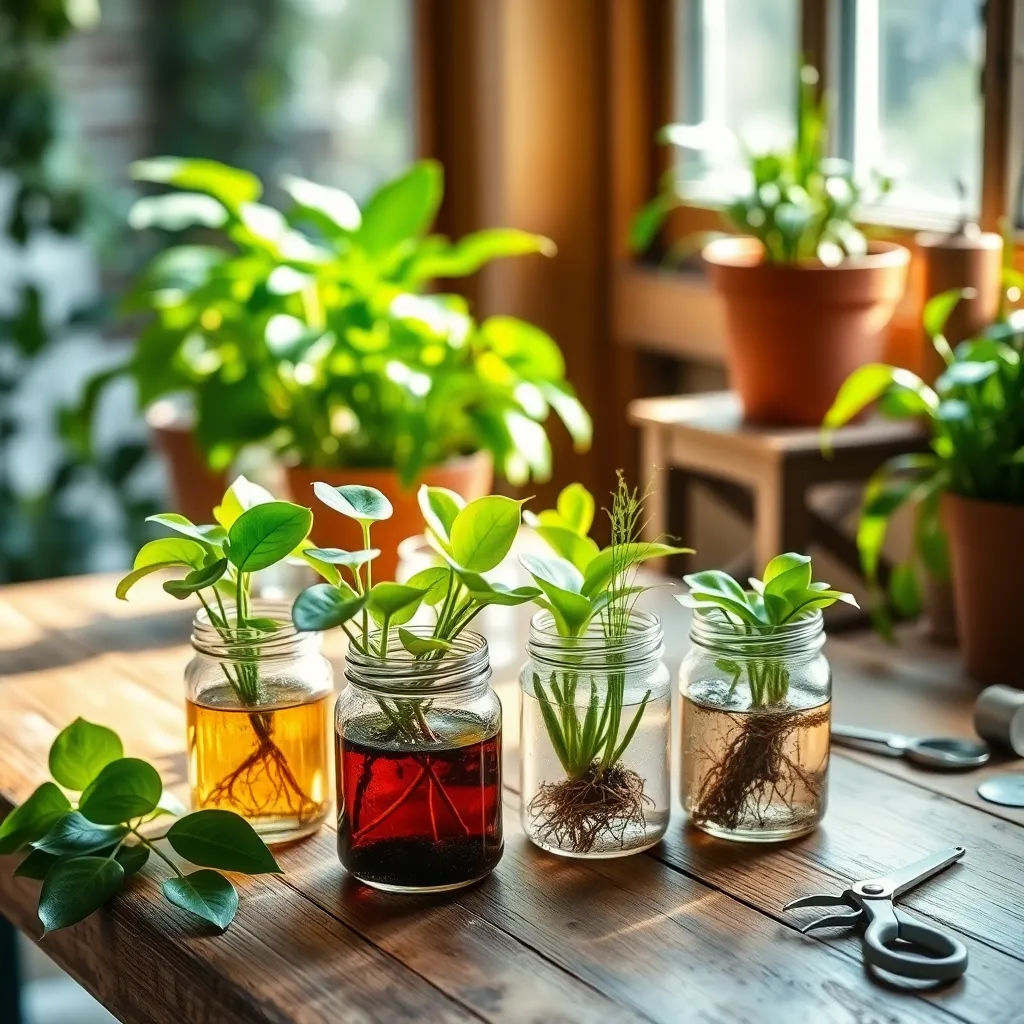
Propagating plants from cuttings is a cost-effective way to expand your indoor garden without buying new plants. Start by choosing healthy, non-flowering stems from plants like pothos or spider plants, which are known for their ease of propagation.
After selecting your plant, use clean, sharp scissors to cut a stem just below a node, which is where new roots will develop. Ensure the cutting is about 4-6 inches long and remove the lower leaves to prevent them from rotting in water.
Place the cutting in a glass of water, ensuring that at least one node is submerged to encourage root growth. Position the glass in a spot with bright, indirect light, changing the water every few days to keep it fresh and oxygenated.
Once roots are about an inch long, usually within a few weeks, transfer the cutting to a pot with a well-draining soil mix. A combination of potting soil and perlite or sand can provide the right balance of moisture retention and drainage.
For a more advanced approach, consider using a rooting hormone to stimulate faster root development, particularly for woody plants like rosemary. Dip the cut end in the hormone before placing it in water or soil, and monitor moisture levels closely to prevent drying out.
Utilize Natural Light Sources
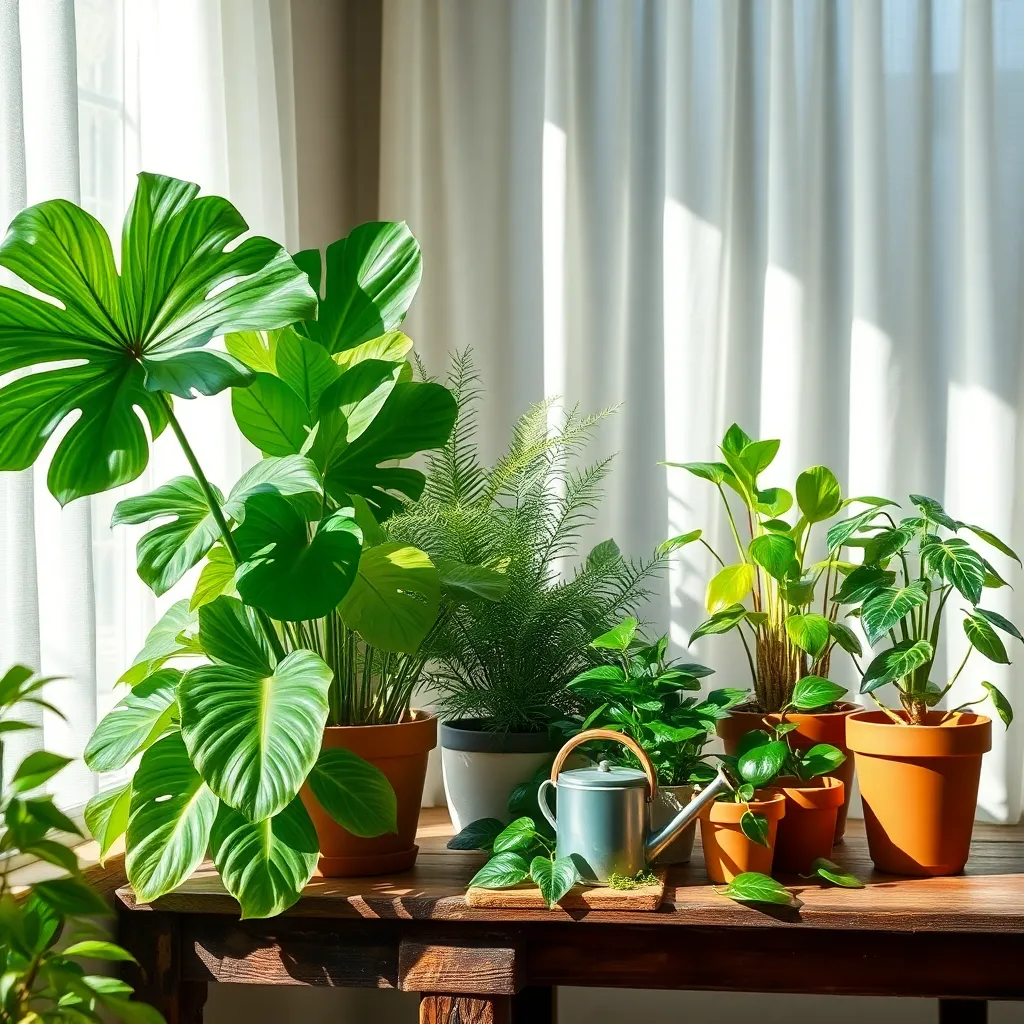
When cultivating indoor plants on a budget, maximizing natural light is one of the most cost-effective strategies. Position your plants near south-facing windows to ensure they receive adequate sunlight throughout the day, which is essential for photosynthesis and healthy growth.
Rotate your plants every few weeks to promote even growth and prevent them from leaning towards the light source. This simple practice can help maintain a balanced shape and prevent the need for costly corrective measures later on.
For those with limited direct sunlight, consider using mirrors to reflect light onto your plants, effectively increasing their exposure without additional expense. Reflective surfaces can amplify available light, especially during shorter winter days when natural light is scarce.
Understanding the light requirements of your specific plant species is crucial. Low-light plants like pothos and snake plants can thrive in areas with less sunlight, making them perfect choices for spaces with indirect light.
Advanced gardeners might consider creating a light map of their home to identify the best spots for different plants based on their light needs. This method ensures each plant receives the optimum light it requires, enhancing growth and reducing the risk of poor health.
Group Plants for Humidity
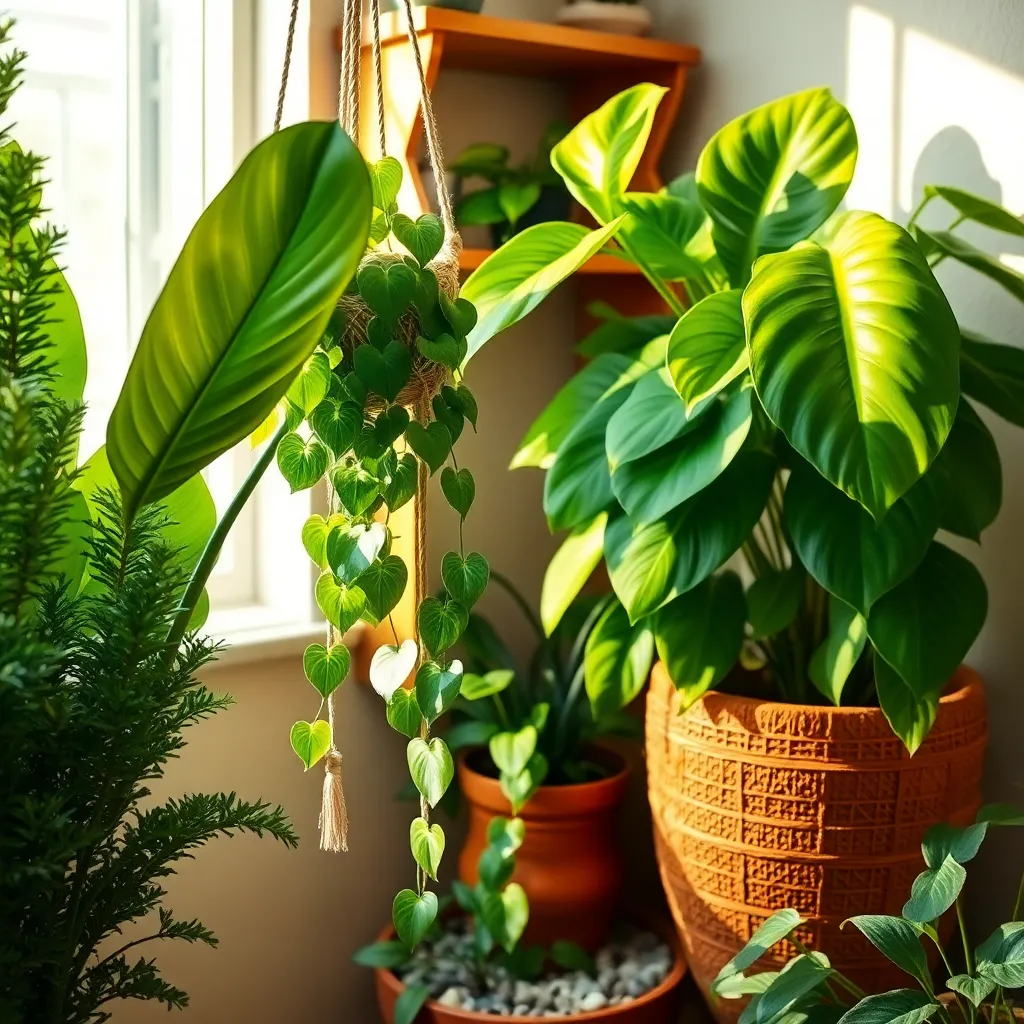
Grouping plants that thrive in high humidity can create a mini ecosystem that supports their growth. By clustering plants like ferns, peace lilies, and spider plants, you enhance moisture levels naturally, reducing the need for frequent misting.
Position these plants in areas like bathrooms or kitchens, where humidity naturally tends to be higher. Alternatively, arranging them on a single tray filled with pebbles and water can maintain the humidity they require without excessive watering.
Ensure your plants are in well-draining soil, such as a mix of potting soil, perlite, and orchid bark, to prevent root rot. This composition allows for adequate aeration, which is crucial as excess moisture can lead to fungal issues.
For more advanced care, consider placing a small humidifier near your plant group during dry seasons. This simple addition can mimic their native environment, promoting lush growth and vibrant foliage, making your indoor garden thrive.
DIY Organic Fertilizer Solutions
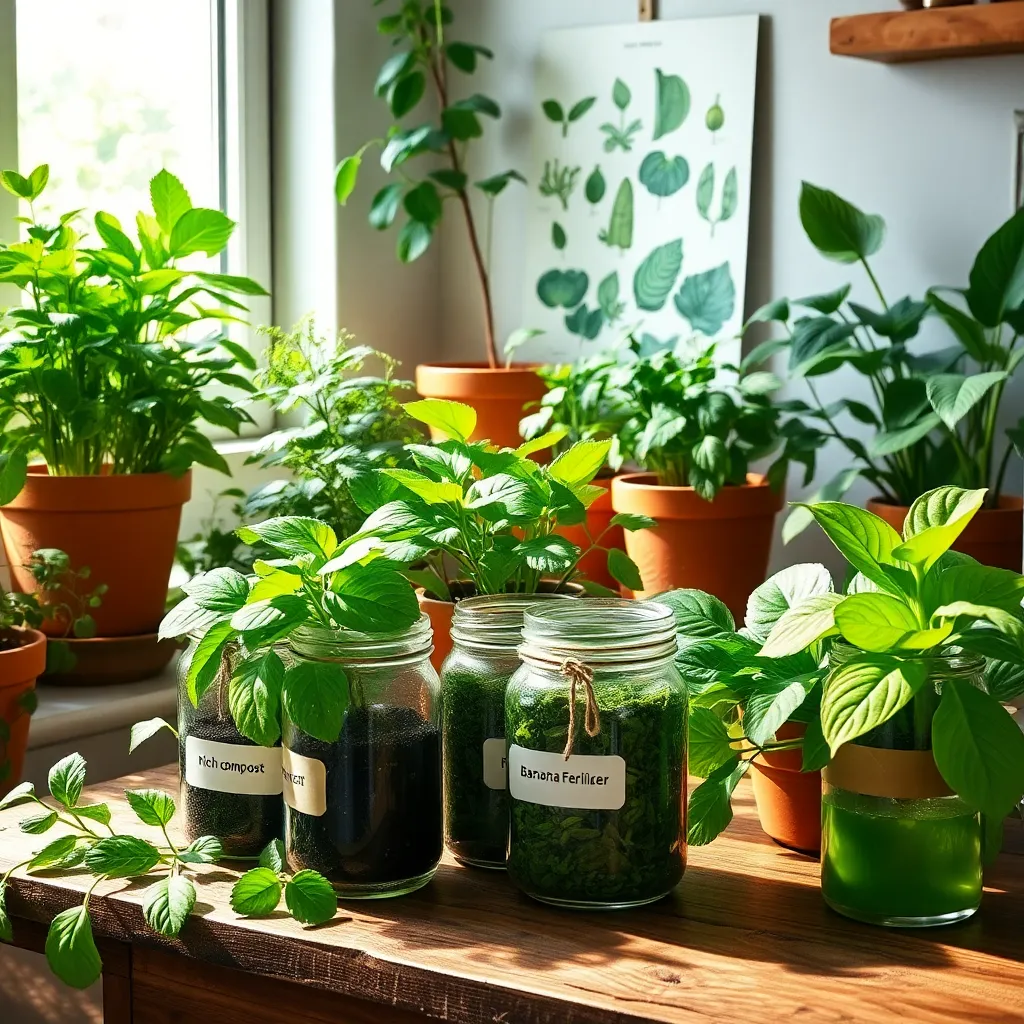
Creating your own organic fertilizer is a budget-friendly way to nourish your indoor plants. Start by using kitchen scraps like eggshells and banana peels, which are rich in calcium and potassium, respectively.
Eggshells can be ground into a fine powder and sprinkled onto the soil to provide essential calcium to plants. To prepare banana peel fertilizer, simply soak the peels in water for a few days and use the resulting liquid to water your plants.
For a nutrient-rich compost, gather vegetable scraps, coffee grounds, and shredded paper to create a balanced mixture. This compost can be added to your potting soil to improve its nutrient content and structure.
Advanced gardeners might consider brewing a compost tea by steeping compost in water for a few days, then using the liquid to water plants. This tea provides a quick nutrient boost and is excellent for promoting healthy foliage.
Conclusion: Growing Success with These Plants
As we wrap up our exploration of budget-friendly indoor plant ideas, let’s revisit the five key concepts that not only transform your living space but also nurture the relationships that thrive within it. First, we embraced the art of choosing low-maintenance plants that foster shared responsibility and teamwork. Next, we explored creative DIY plant projects that offer bonding opportunities. We then discussed the importance of creating a shared sanctuary with plants that purify the air and elevate your home environment. Our fourth concept highlighted how personalizing plant care routines can strengthen communication and cooperation. Finally, we discovered the joy of gifting plants as a gesture that cultivates generosity and thoughtfulness.
Now, take the first step by selecting a plant that resonates with both you and your partner, and begin your journey of growth together. As you embark on this green adventure, remember to bookmark this article as a handy reference for future plant-related endeavors.
Looking ahead, embracing these plant ideas is more than just an aesthetic choice—it’s a pathway to deeper connection and enduring relationship success. With these insights at your fingertips, you’re empowered to cultivate a thriving, harmonious home environment. Save this article now and let it be your guide to nurturing both love and nature.
